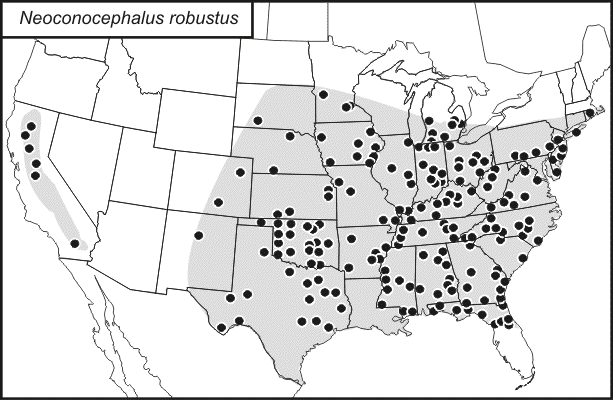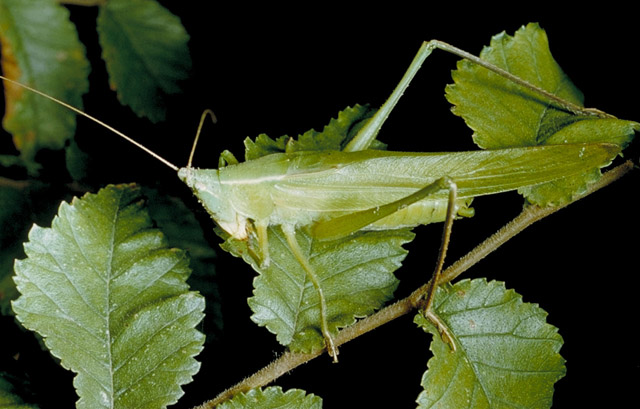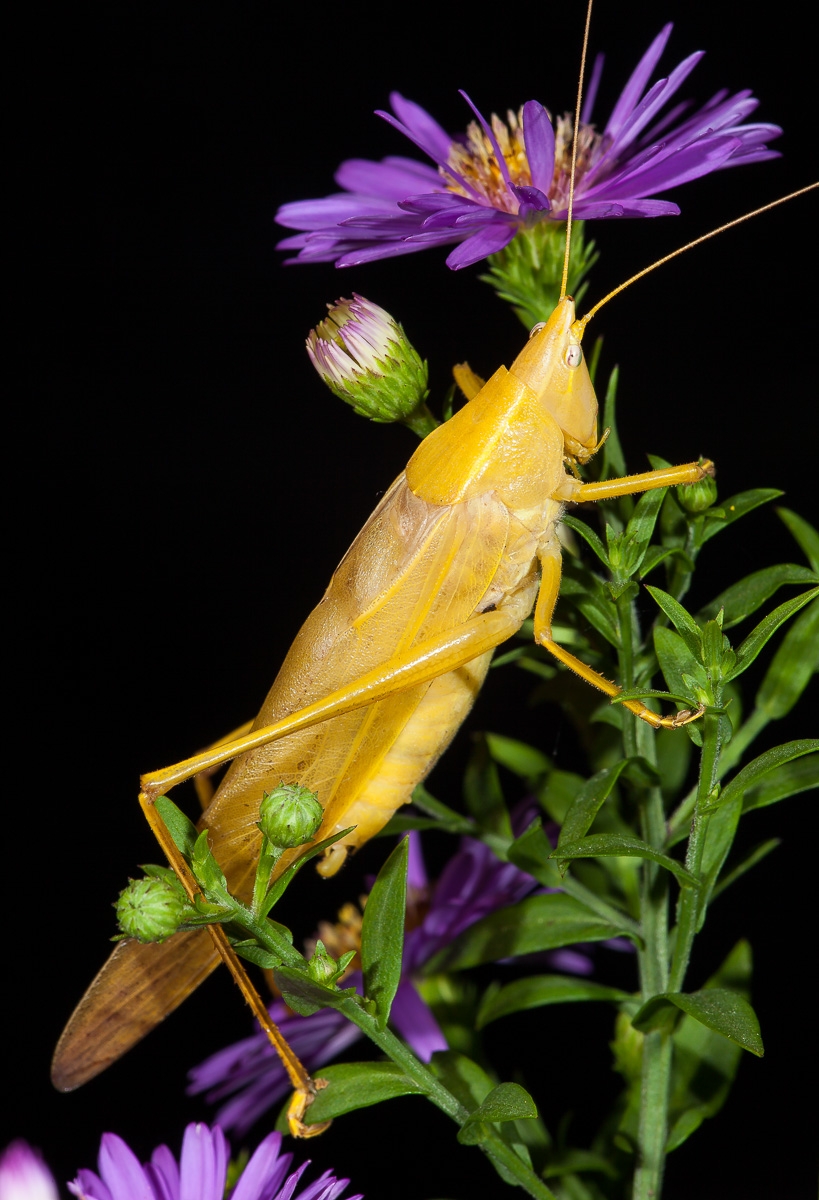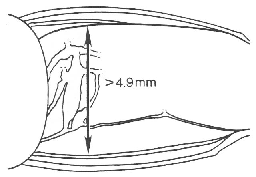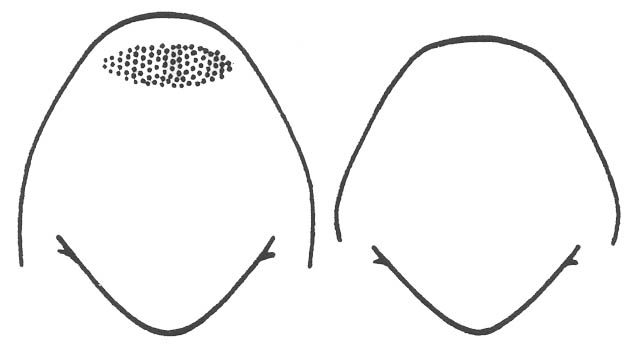|
Song:
|
A very loud continuous buzz that can be heard under favorable conditions at least 500 m away. At a distance it has a whining quality, while up close it is dominated by an intense, low-pitched hum.
|
|
Song data:
|
Excel worksheet and chart (from spectrographic analyses).
|
|
Identification:
|
Large (length 53-74 mm). Cone immaculate beneath or with transverse black mark near tip. Ovipositor 1.0-1.1 times length of hind femur. Width of stridulatory area (as measured in drawing above) greater than 4.9 mm. Male pronotal length less than 1.8 times rear width (as in drawing above).
|
|
Similar species:
|
N. bivocatus has the ovipositor more than 1.2 times length of hind femur; width of stridulatory area less than 4.9 mm. N. velox matures earlier in the year and has the ovipositor shorter than the hind femur; male pronotal length greater than 1.8 times rear width. N. palustris is smaller and its ovipositor is shorter than its hind femur.
|
|
Habitat:
|
Tall, rank vegetation such as moist upland prairies, cornfields, wet areas behind coastal dunes, and the edges of saltmarshes.
|
|
Season:
|
July–September.
|
|
Seasonal data:
|
N. Fla. data.
|
|
Remarks:
|
The apparently disjunct California population is of unknown origin. N. robustus is a strong flier, as is N. triops, the other conehead that occurs in California. During calling, the thorax of N. robustus is as much as 27º F (15º C) above the ambient temperature (Heath and Josephson 1970). Differences in ambient temperature influence its wingstroke rate but less so than in other katydids.
|
|
More information:
|
Subfamily Copiphorinae, genus Neoconocephalus.
|
|
References:
|
Nutting 1953, Walker et al. 1974, Deily and Schul 2004.
|
|
Nomenclature:
|
OSF (Orthoptera Species File Online).
|




